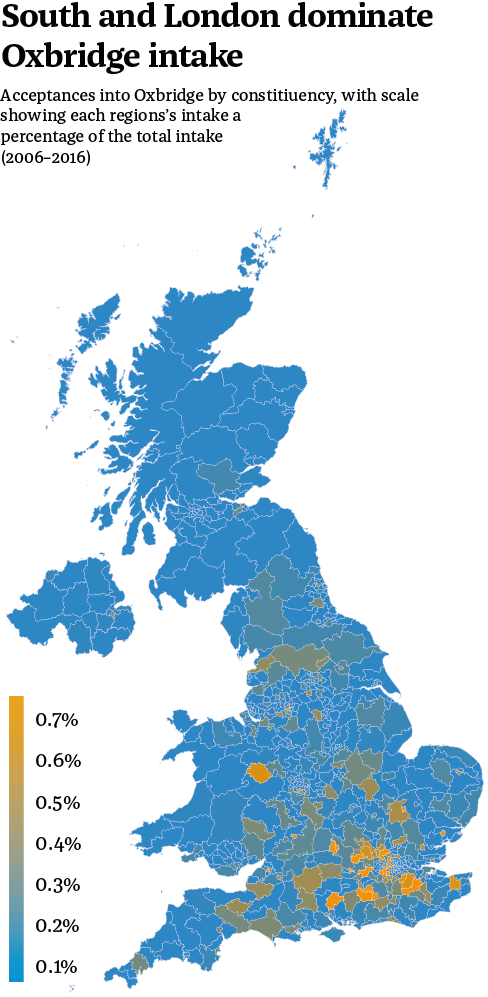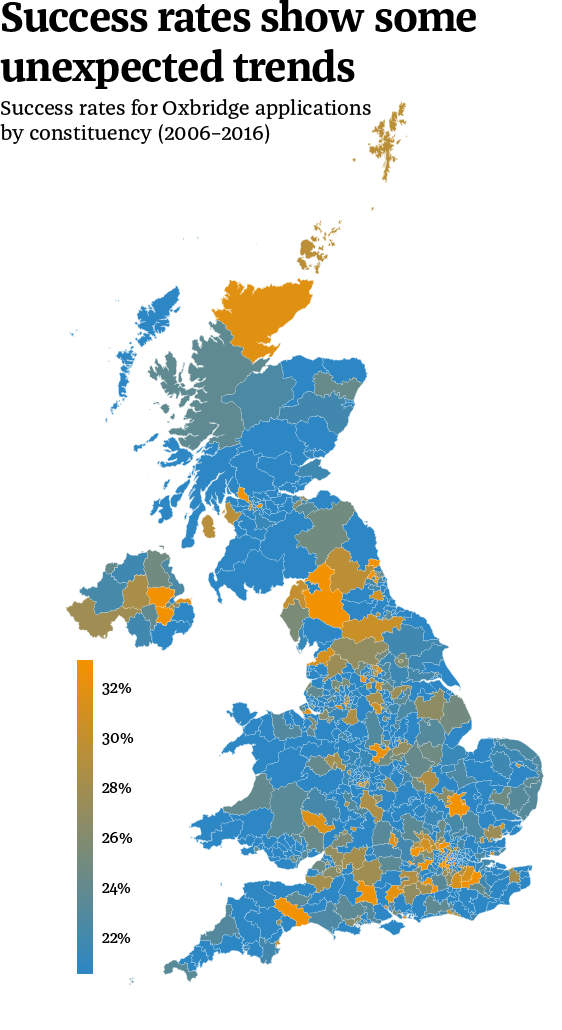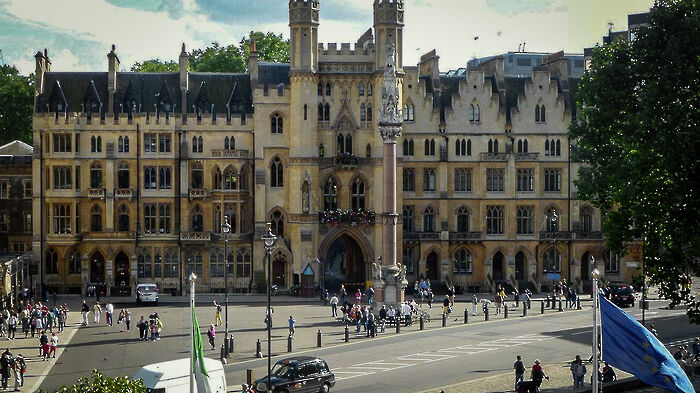Revealed: The regional disparities in Cambridge’s access efforts
A Varsity investigation has found a glaring gap in access efforts aimed at students in Scotland, Wales and Northern Ireland compared to England

Cambridge has worked hard in recent years to shed its image as a bastion of elitism, with prosecco-fuelled May Balls and stuffy academics terrifying interviewees still dominating so much of its coverage in the national press. A key element of its efforts has been working to increase the percentage of students admitted from underrepresented regions of the UK.
However, there continues to be a glaring gap in access efforts aimed at students in Scotland, Wales, and Northern Ireland compared to England, aggravating systemic issues of access for underrepresented areas of the UK.
Analysis of data and testimonials gathered by Varsity finds that, while college Schools Liaison Officers (SLOs) do valuable work, and Cambridge has gone to significant lengths to improve its access scheme, certain colleges bear a disproportionate amount of responsibility for outreach programmes, falling under the University’s Area Links scheme.
While some colleges focus their resources on large regions of the UK, others have targeted fewer, more disparate areas. In several cases, richer colleges target fewer areas than some of the poorest.
Work by Schools Liaison Officers
Many colleges maintain strong relationships with their link areas. Between March and April 2017, Emmanuel was visited by over 400 students from its linked areas, which include Essex and Sheffield. Meanwhile, between July 2016 and June 2017, Churchill worked with 2,122 students and 176 teachers from 105 schools and colleges through its link to South Wales. The University believes that, in some regions, these efforts have had a direct impact on applications: Churchill noted that 2017 saw the highest number of applicants to Cambridge from Welsh state-maintained schools “in over a decade.”

A University spokesperson admitted that Scotland “is a challenge,” with less favourable fee conditions meaning it tends to be “families with resources” who send students to Cambridge. They also note that Scotland used to be looked after by just one college, before a review 18 months ago split the responsibility between three.
Even with systemic factors making students from outside of wealthier areas in London and the South East less likely to go to Cambridge to begin with, more needs to be done on the part of the University to address these disparities. This is being addressed to some extent by a new Easter Residential at Homerton and Selwyn, which is expected to touch on issues like student finance specific to Scottish students. Scottish schools are also less likely to reach out to Cambridge for visits – with only one Scottish school visiting in 2017 – bringing 20 pupils to Selwyn.
Emphasising disadvantages
The regions which are least targeted by Cambridge colleges are often those which already have the lowest participation rates in higher education. According to the government’s Participation of Local Areas (POLAR4) classification, which evaluates areas on the percentage of young people engaged in education after school, Wales has the highest rates of young people accessing no post-secondary education, at 20%. By contrast, London has the highest rate of access to higher education in the country, with around 45% of young Londoners living in areas classed as having the highest levels of participation in higher education. Despite this, London – with a population of just under nine million people to Wales’ three million – is divided into 33 access areas targeted by 17 colleges, while Wales is only targeted by two colleges.

Similar disparities exist in the distribution of areas across England. Birmingham, with a population of 1,124,569 and a wide variance in access to higher education across its districts, is allocated to one college: Newnham. The North East, which has the highest proportion of students least likely to participate in the entirety of the UK, is shared between King’s and Jesus. Though this can allow for more focused use of resources and effort, these are also some of the regions most affected by the problem of distance. According to the University, “the further away the Link Area the more challenging it’ll be to attract students and the more costly the outreach activities will be.”
Vital work
Nevertheless, the work of college SLOs themselves is highly valuable. Testimonies from students who have taken part in college access work all praised their officers. Feedback reported by SLOs from school students they met is also often very positive – some visits were labelled “insightful” and “eye-opening”.
Each SLO contacted detailed the wide array of programmes and activities that they were engaged in. The colleges have each built up connections with large numbers of schools in their areas, and are in regular contact.
Incoming CUSU access officer Shadab Ahmed urged both the government and the University to address disparities in access. He described a “vicious self-fulfilling circle, whereby students from underrepresented areas do not see or hear themselves while visiting, and thus don’t feel a sense of belonging and are dissuaded from applying.” To combat this, he would like to see access events at Cambridge feature representatives from under-targeted regions. He also noted “regional discrepancies in funding by the government,” where “disadvantaged students in London were 41% more likely to achieve 5 A*-C grades under the old system than their counterparts from some regions in the North.
“Therefore, while Cambridge should further expand and tailor its schemes more specifically to certain regions, there must also follow an effort from the government to provide equal funding across the UK.”
A changing picture
Access to Cambridge seems to be improving, albeit slowly. In the University’s 2017 intake, 63% of Cambridge students were state-educated – a rise of nearly five percent since 2011. In a report submitted to the Office for Fair Access, the University emphasised that it believed it was doing well to admit students from backgrounds unlikely to access higher education. Cambridge estimated that it admitted 17% of young people from areas historically least likely to participate in higher-education who met the University’s A*AA offer threshold.
However, it is worth noting that while colleges do not hold an annual review due to the potentially “harmful” effect of changing long-standing area links relationships, they held a large review 18 months ago and some “struggling” colleges were able to pass over their areas to “better-provisioned” colleges. This was shown by the Connect to Cambridge scheme, which has allowed colleges to focus increasingly on the local area of Cambridge and Peterborough outside of the area links scheme. They hope to have more accessible data soon, with the introduction of the Higher-Education Access Tracker (HEAT), which will allow colleges and universities to record access data in a central platform.
 News / SU stops offering student discounts8 January 2026
News / SU stops offering student discounts8 January 2026 News / Uni-linked firms rank among Cambridgeshire’s largest7 January 2026
News / Uni-linked firms rank among Cambridgeshire’s largest7 January 2026 Comment / Plastic pubs: the problem with Cambridge alehouses 5 January 2026
Comment / Plastic pubs: the problem with Cambridge alehouses 5 January 2026 News / New movement ‘Cambridge is Chopped’ launched to fight against hate crime7 January 2026
News / New movement ‘Cambridge is Chopped’ launched to fight against hate crime7 January 2026 Comment / What happened to men at Cambridge?31 December 2025
Comment / What happened to men at Cambridge?31 December 2025










